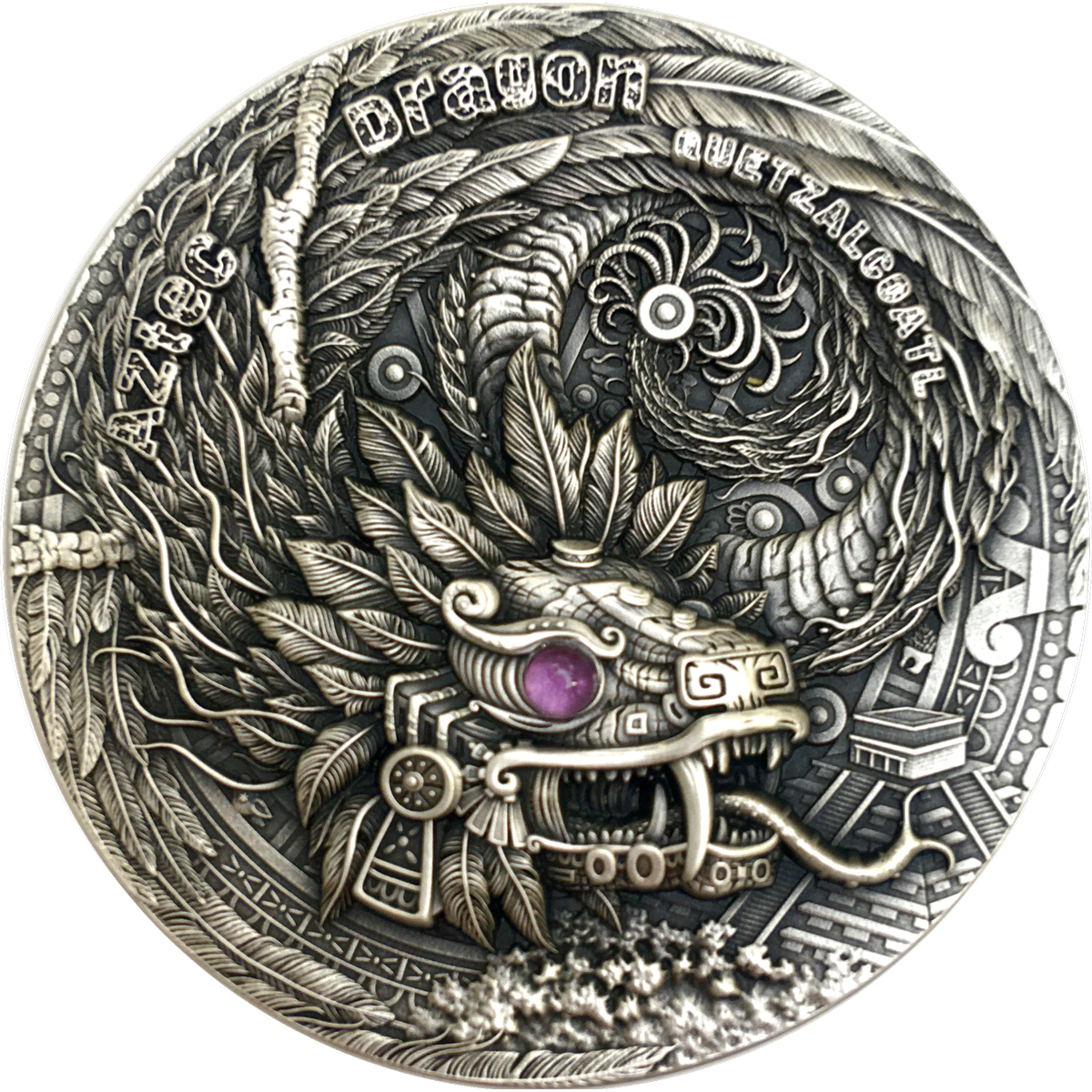The Dragon series from Numiartis returns with a trip to the New World and the Aztec Empire
Back with the third entrant, the Dragon series from Numiartis and the Mint of Poland returns and heads over the Atlantic to the New World for inspiration. You don’t often associate the Aztecs with dragons, but Quetzalcoatl was actually the feathered serpent god, and what, after all, is a dragon? Movie fans will even remember the cult 1982 movie, Q: The Winged Serpent.
What the Aztecs do have is a very distinctive cultural style and this new coin does a great job of harnassing that. Indeed, it’s fair to say the whole series has done a fantastic job tapping into the distinct cultural styles of their subjects, and you can see the 2019 Norse and 2018 Chinese dragon coins below to see how.
This one looks great. You can see the Mesoamerican iconography all over the dragon and there are feathers everywhere. A nice nod to the civilisation with an iconic Aztec stepped pyramid in the background, scene of countless human sacrifices, no doubt. A piece of mineral, a series signature, is this time placed in the beasts eye and is a piece of amethyst. Edge to edge high-relief detail and a lovely antique finish round out the reverse face.
The common obverse returns, with five different dragons, each placed twice, forming a nice border around the obligatory effigy of QEII. As you’d expect, the 500 mintage 2oz silver coin comes boxed with a Certificate of Authenticity. A standout series in the genre for us, this one does nothing but enhance what has gone before. Available to pre-order now.
QUETZALCOATL, THE FEATHERED SERPENT
Quetzalcóatl (pron. Quet-zal-co-at) was one of the most important gods in ancient Mesoamerica. The god known as the Plumed Serpent is a mix of bird and rattle snake and his name is a combination of the Nahuatl words for the quetzal – the emerald plumed bird – and coatl or serpent. He was also known as Kukulkán to the Maya, Gucumatz to the Quiché of Guatemala, and Ehecatl to the Huastecs of the Gulf Coast. He was regarded as the god of winds and rain and as the creator of the world and mankind. In Central Mexico from 1200 CE he was also considered the patron god of priests and merchants and considered the god of learning, science, agriculture, crafts and the arts. He also invented the calendar, was identified with Venus, the rising morning star, he was associated with opossums and even discovered corn (maize) with the help of giant red ant that led him to a mountain packed full of grain and seeds.
Quetzalcóatl was the son of the primordial androgynous god Ometeotl. In Aztec mythology he was the brother of Tezcatlipoca, Huizilopochtli and Xipe Totec. He is the 9th of the 13 Lords of the Day and is often associated with the rain god Tláloc. The god was particularly associated with the sacred site of Cholula, an important place of pilgrimage from 1200 CE and all round Aztec buildings were dedicated to the deity.
Cartwright, M. (2013, August 01). Quetzalcóatl. Ancient History Encyclopedia. Retrieved from https://www.ancient.eu/Quetzalcoatl/
| SPECIFICATION | |
| DENOMINATION | $2 NZD (Niue) |
| COMPOSITION | 0.999 silver |
| WEIGHT | 62.2 grams |
| DIMENSIONS | 45.0 mm |
| FINISH | Antique |
| MODIFICATIONS | Ultra high-relief, Amethyst insert |
| MINTAGE | 500 |
| BOX / C.O.A. | Yes / Yes |






Leave A Comment